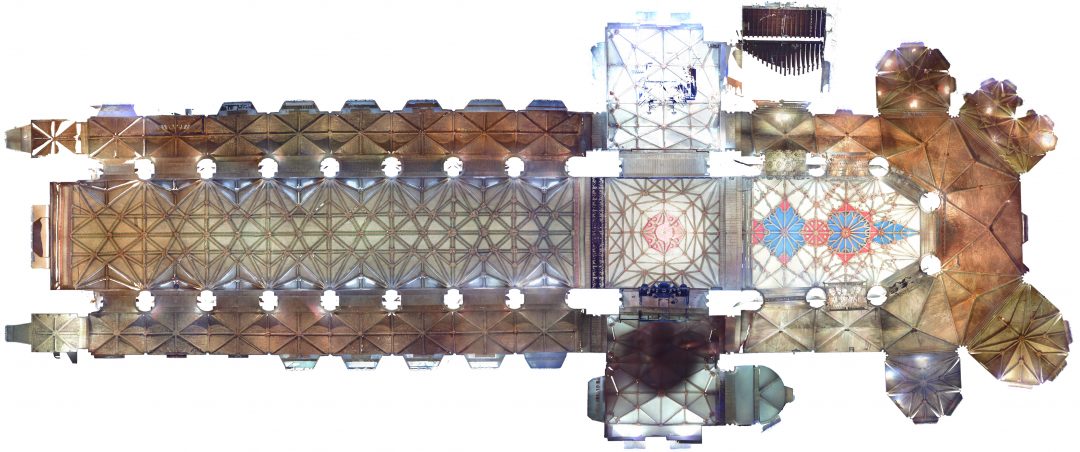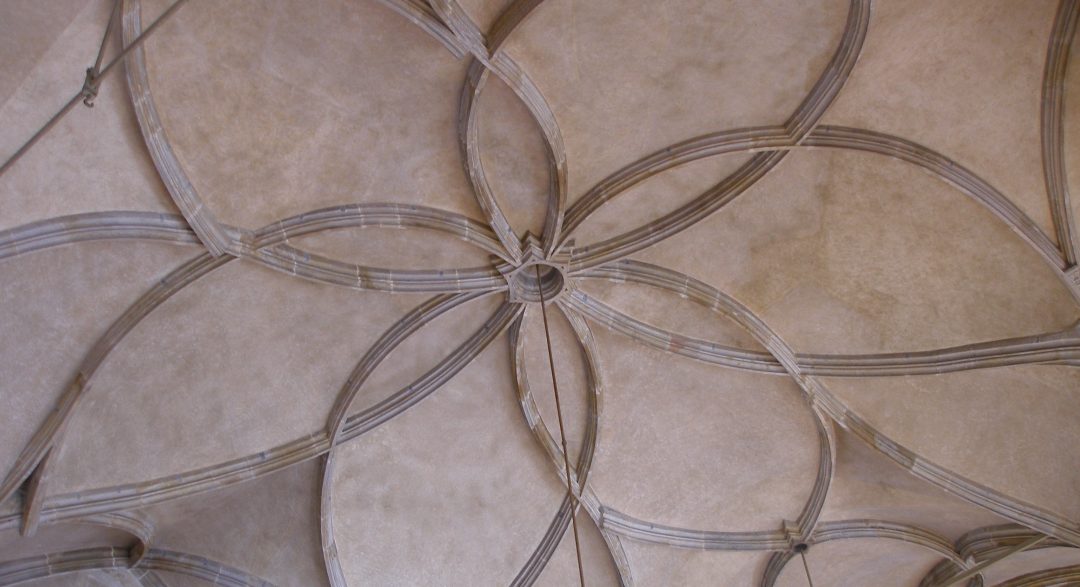About this site
Though much of the church has been destroyed, Pershore Abbey is amongst the most significant sites in the history of medieval English vaulting. Dating from c. 1280-1300, the choir vaults are widely considered to be one of the earliest examples of lierne vaulting in medieval England. The laser scanning data which we used to study these vaults was kindly provided by the company CGD Ltd, who conducted a four-month survey of the site in 2017.
Plan
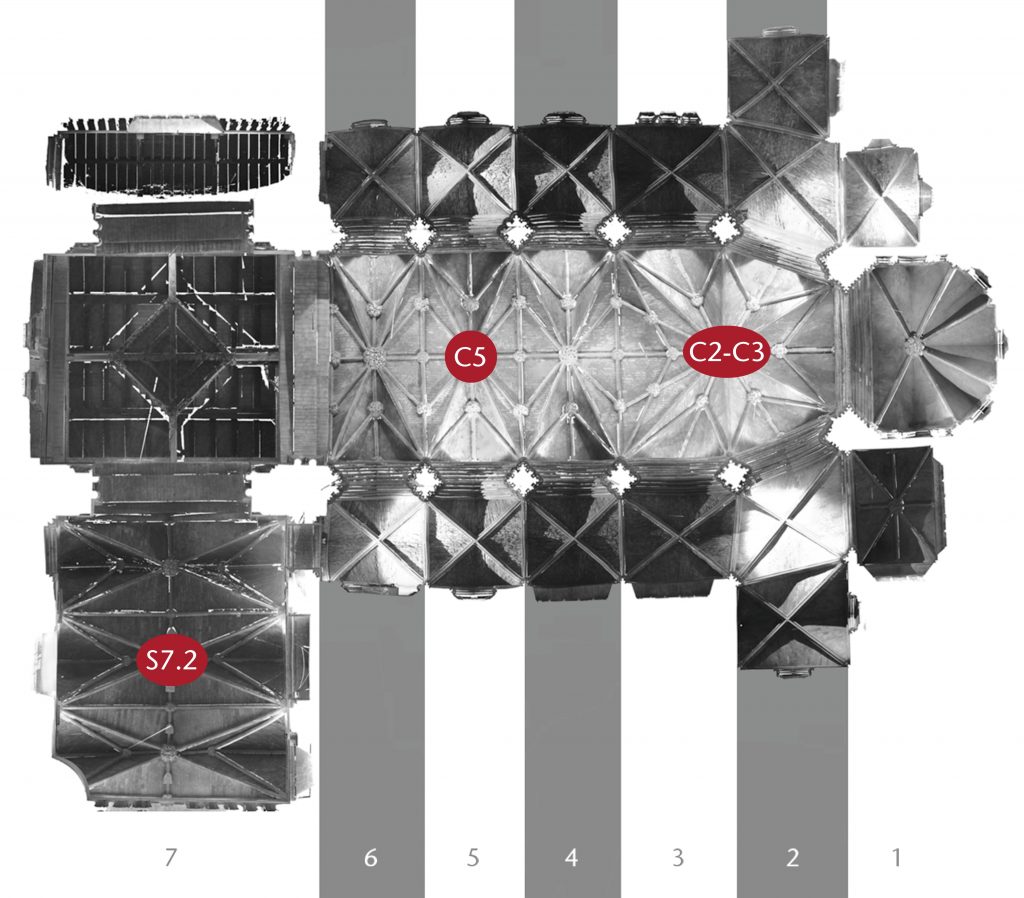
Website
Pershore Abbey
Apse
C2-C3 (c. 1280-1300)
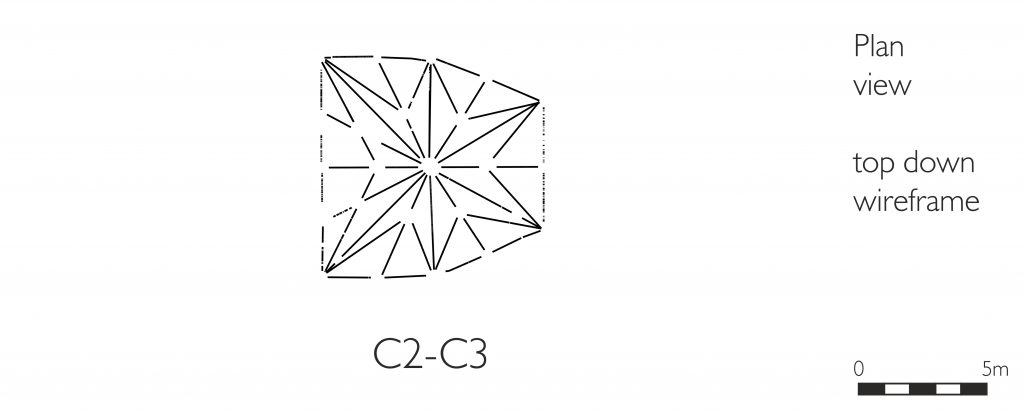
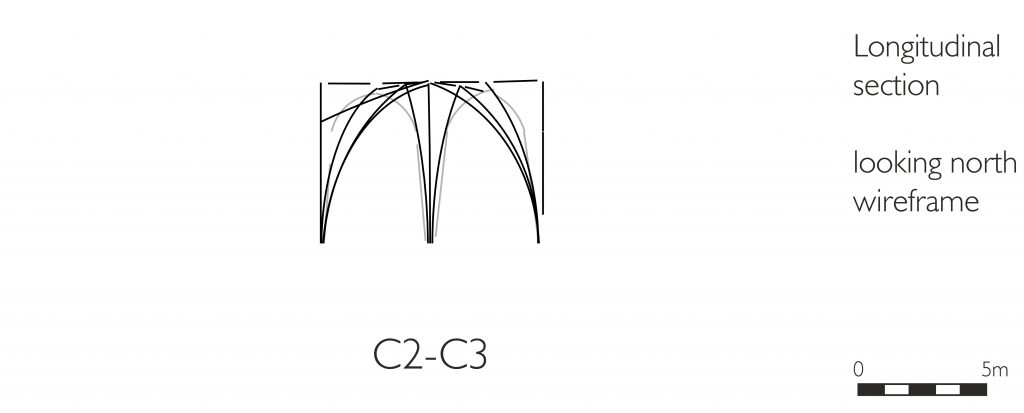
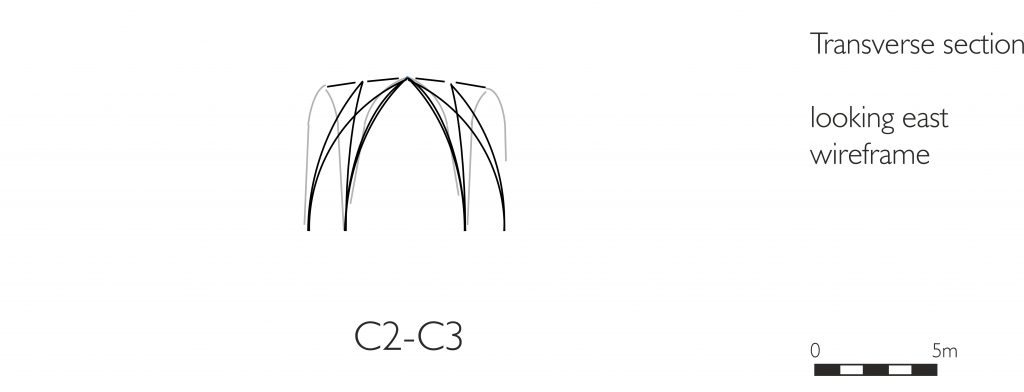
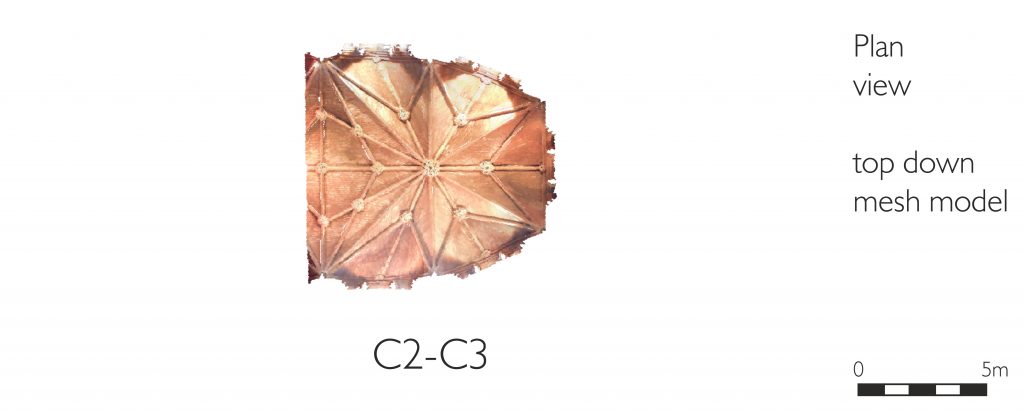
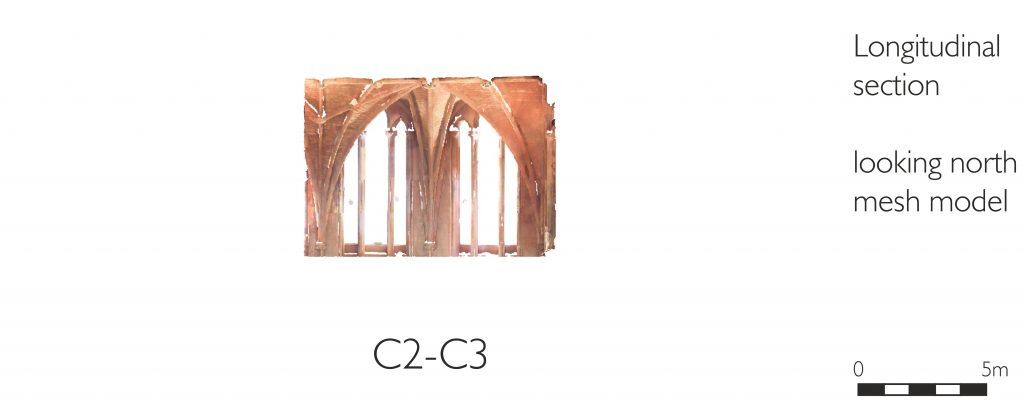
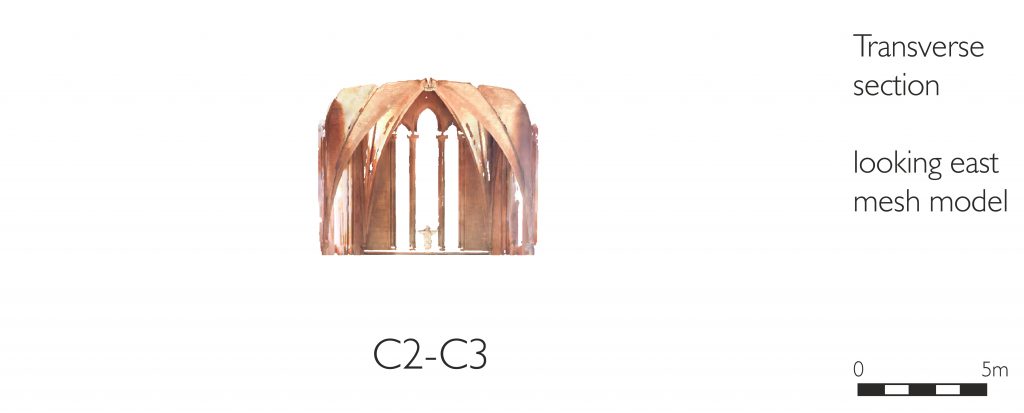
More information
The construction of the apsidal vault at Pershore is usually dated after the fire of 1288. However, more recent research has suggested that it could have started considerably earlier. Its unusual polygonal plan was probably set out during the c. 1220-39 phases of building, perhaps reflecting the structure of the preceding twelfth century fabric. The vault consists of a modified form of tierceron star vault, where the inclusion of liernes of the adjoining choir bays necessitated the incorporation of further liernes into the west side of the apse.
Choir
C4-C6 (c. 1280-1300)
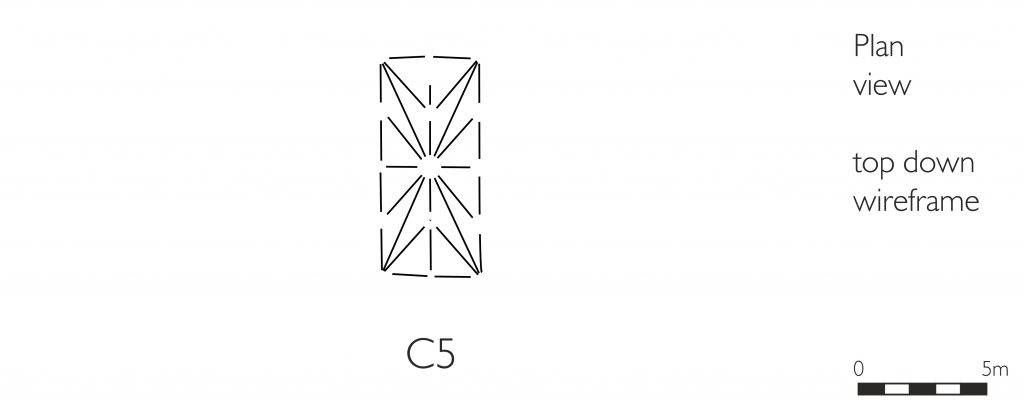
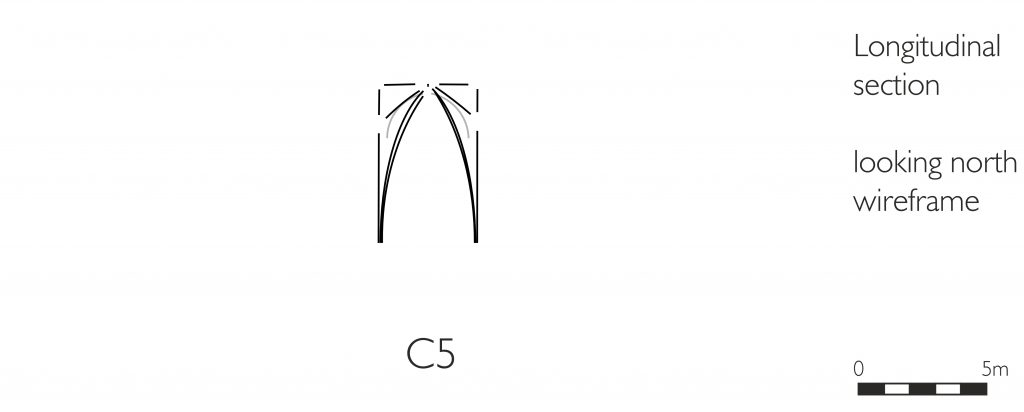
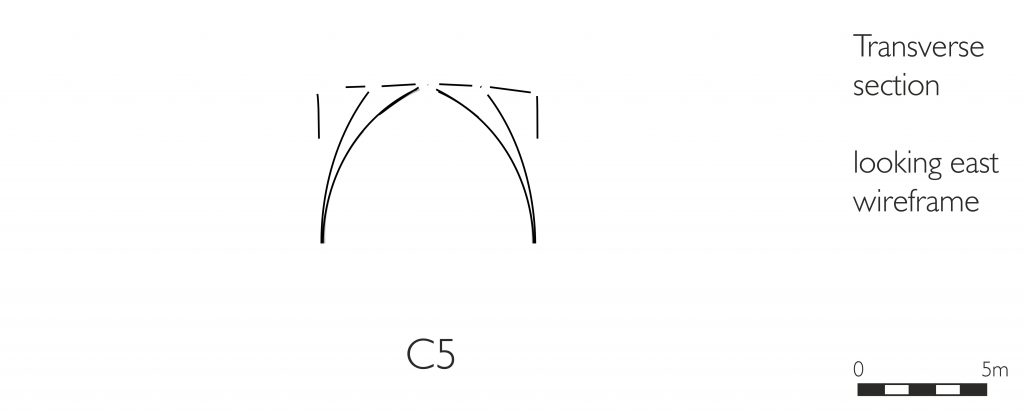
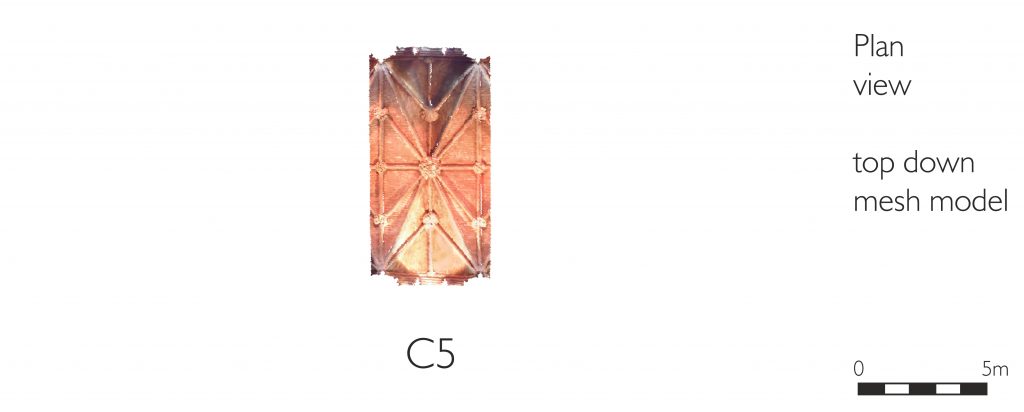
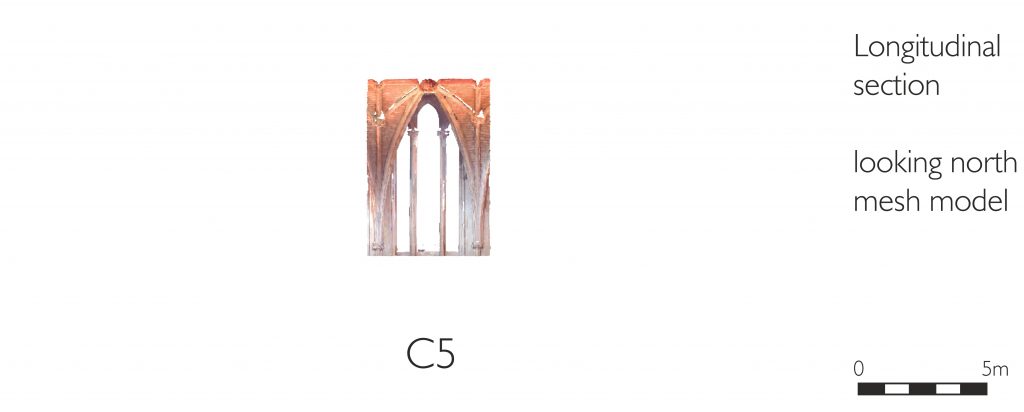
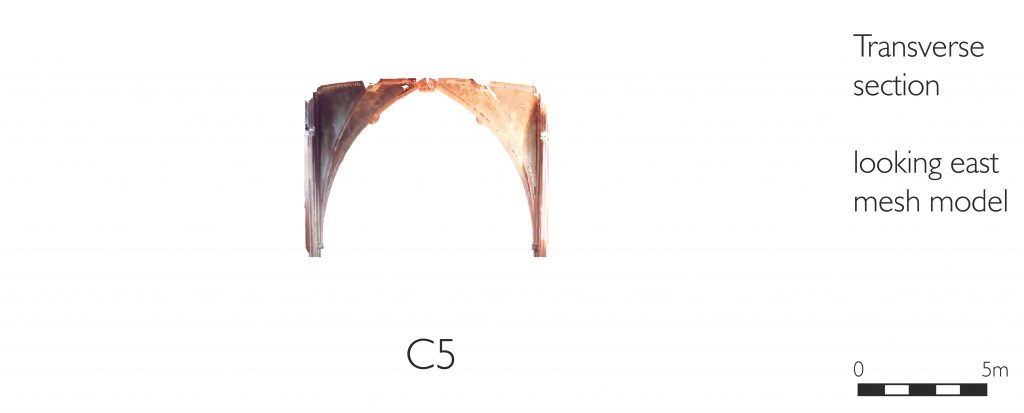
More information
The construction of the choir vault at Pershore is usually dated after the fire of 1288. However, more recent research has suggested that it could have started considerably earlier. It takes the form of a regular tierceron vault with a rectangular ground plan, modified by the addition of liernes that mirror the forms of the tiercerons in the transverse tunnels.
South Transept
S7.1-S7.3 (c. 1315-30)
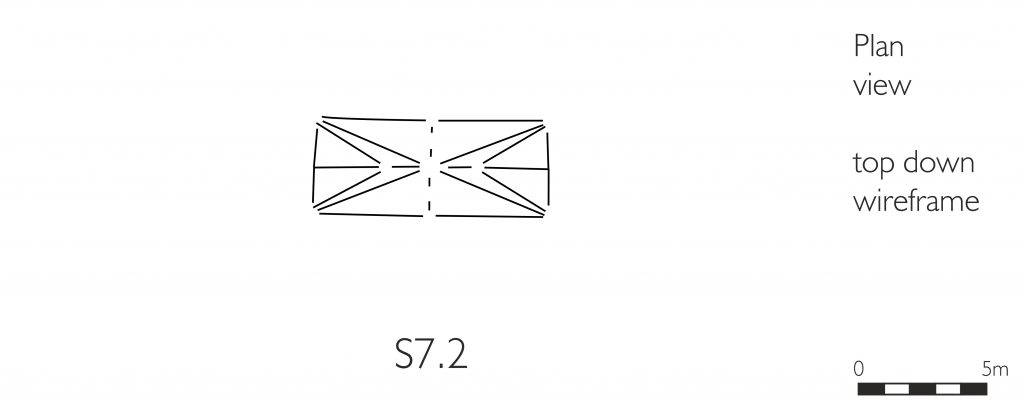
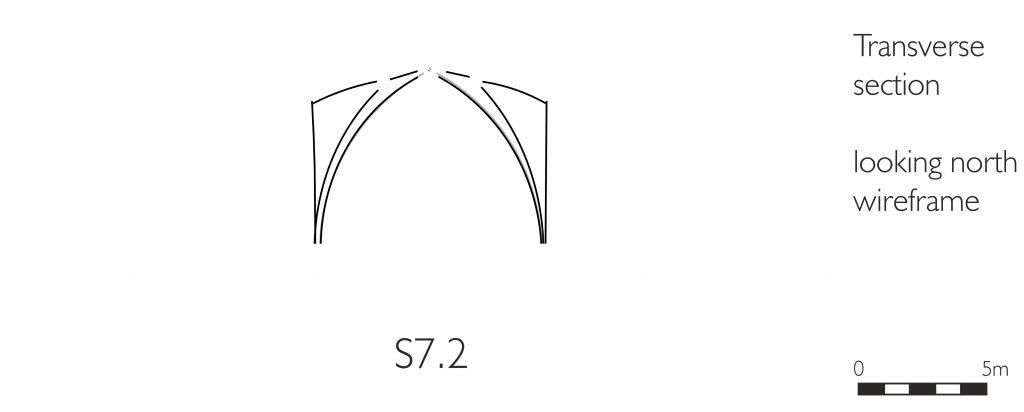
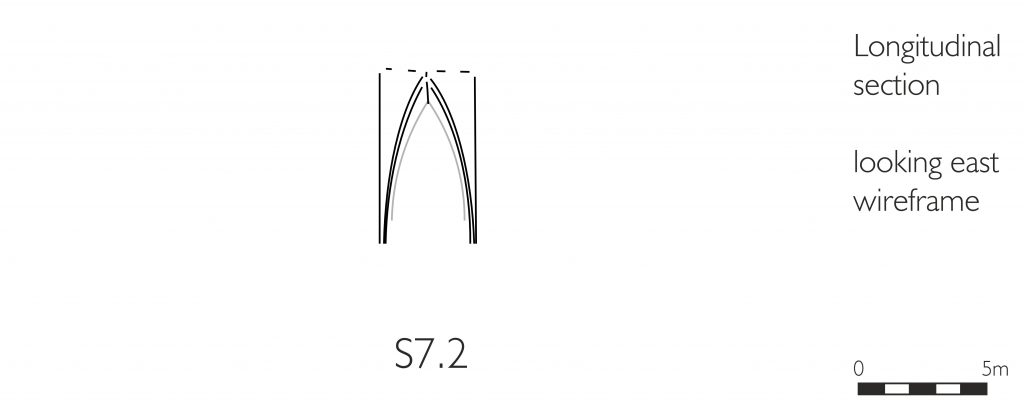
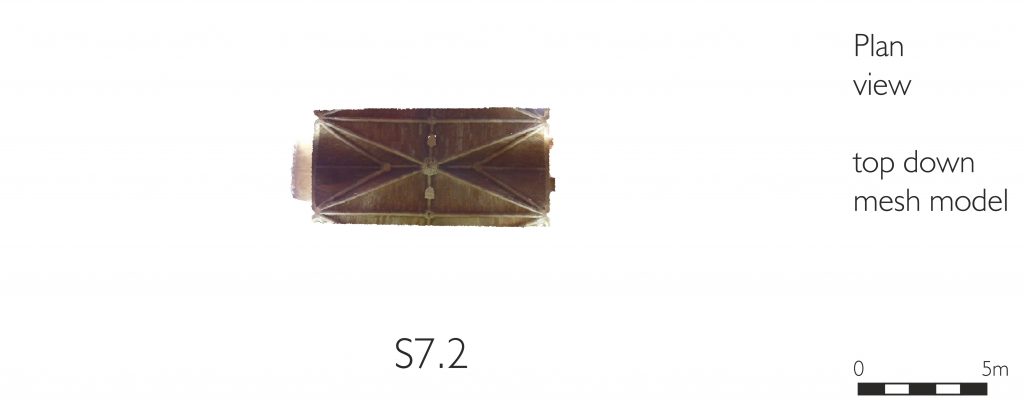
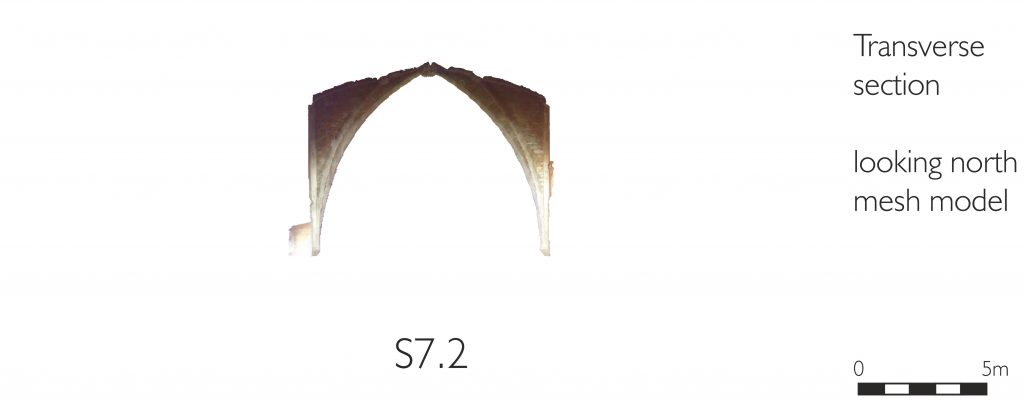
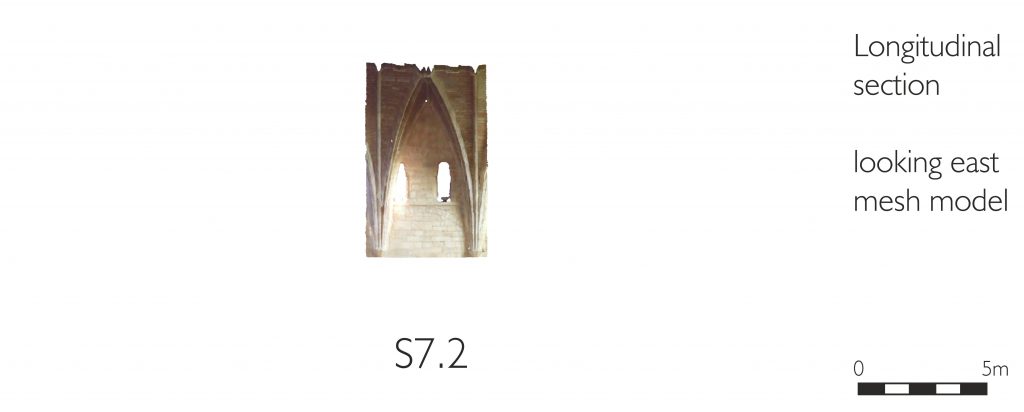
More information
The south transept at Pershore Abbey was originally built c. 1100. The present vault was added at some point during the late 1310s or 1320s, consisting of a simple tierceron vault. An additional set of bosses bearing heraldic shields were added to the vault under the direction of Abbot Newnton (1413-57).
